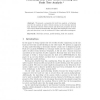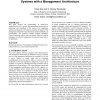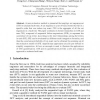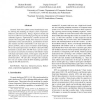SCS
2004
14 years 9 months ago
2004
Limitations in scope but also difficulties with the efficiency and scalability of present algorithms seem to have so far limited the industrial uptake of existing automated FMEA t...
SAFECOMP
1999
Springer
14 years 11 months ago
1999
Springer
Abstract. This paper introduces a new method for safety analysis called HiPHOPS (Hierarchically Performed Hazard Origin and Propagation Studies). HiP-HOPS originates from a number ...
FM
2003
Springer
15 years 22 days ago
2003
Springer
We present a semantics for fault tree analysis, a technique used for the analysis of safety critical systems, in the real-time interval logic Duration Calculus with Liveness and sh...
WOSP
2004
ACM
15 years 29 days ago
2004
ACM
This paper analyzes the performability of client-server applications that use a separate fault management architecture for monitoring and controlling of the status of the applicat...
QSIC
2005
IEEE
15 years 1 months ago
2005
IEEE
Fault Tree Analysis (FTA) is a traditional deductive safety analysis technique that is applied during the system design stage. However, traditional FTA does not consider transitio...
HPCC
2007
Springer
15 years 1 months ago
2007
Springer
A new evaluation method is presented that employs cut sequence set (CSS) to analyze fault trees. A cut sequence is a set of basic events that fail in a specific order that can indu...
ATVA
2007
Springer
15 years 1 months ago
2007
Springer
Abstract. Dynamic fault trees (DFTs) are a versatile and common formalism to model and analyze the reliability of computer-based systems. This paper presents a formal semantics of ...
DSN
2007
IEEE
15 years 1 months ago
2007
IEEE
Dynamic Fault Trees (DFT) extend standard fault trees by allowing the modeling of complex system components’ behaviors and interactions. Being a high level model and easy to use...




